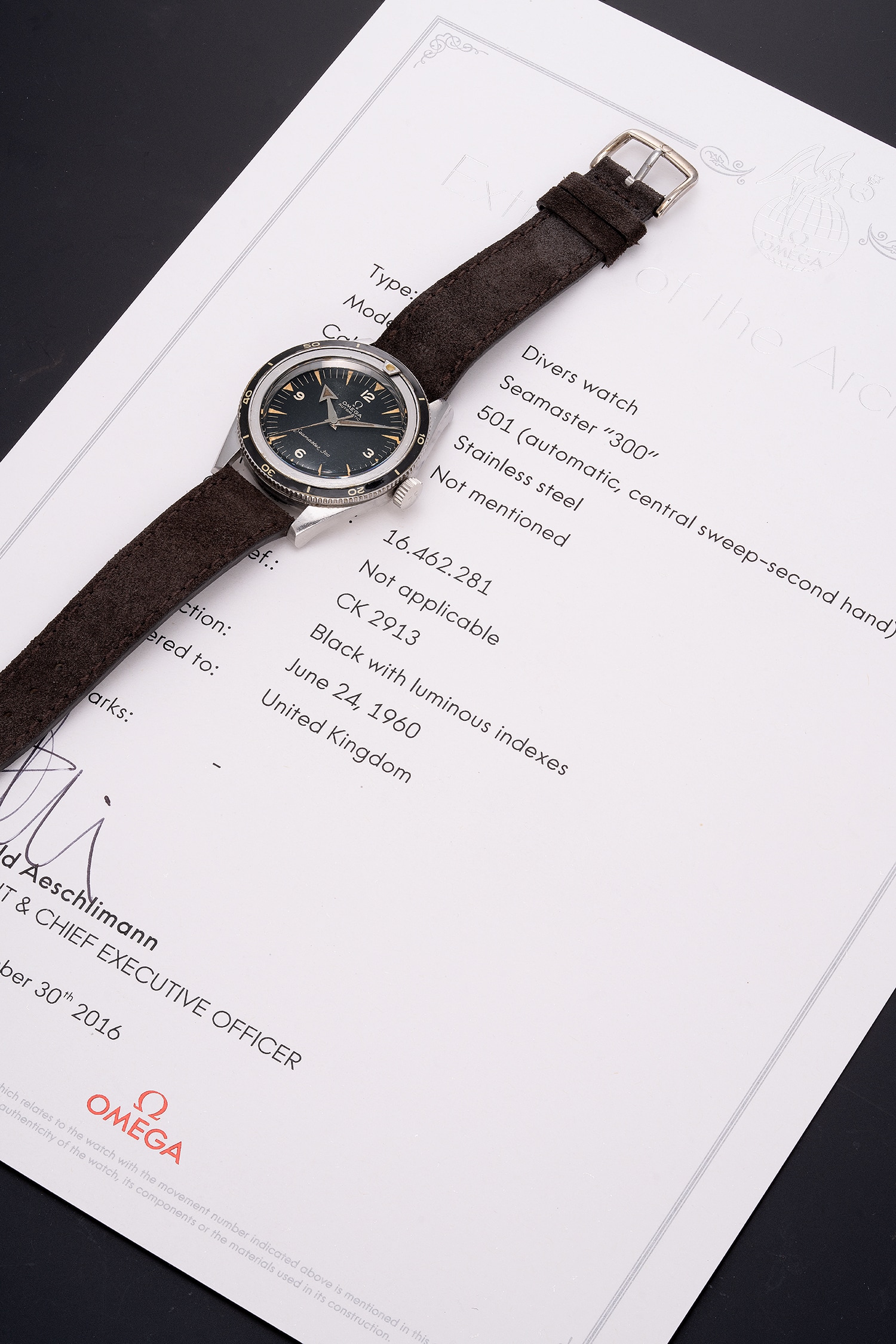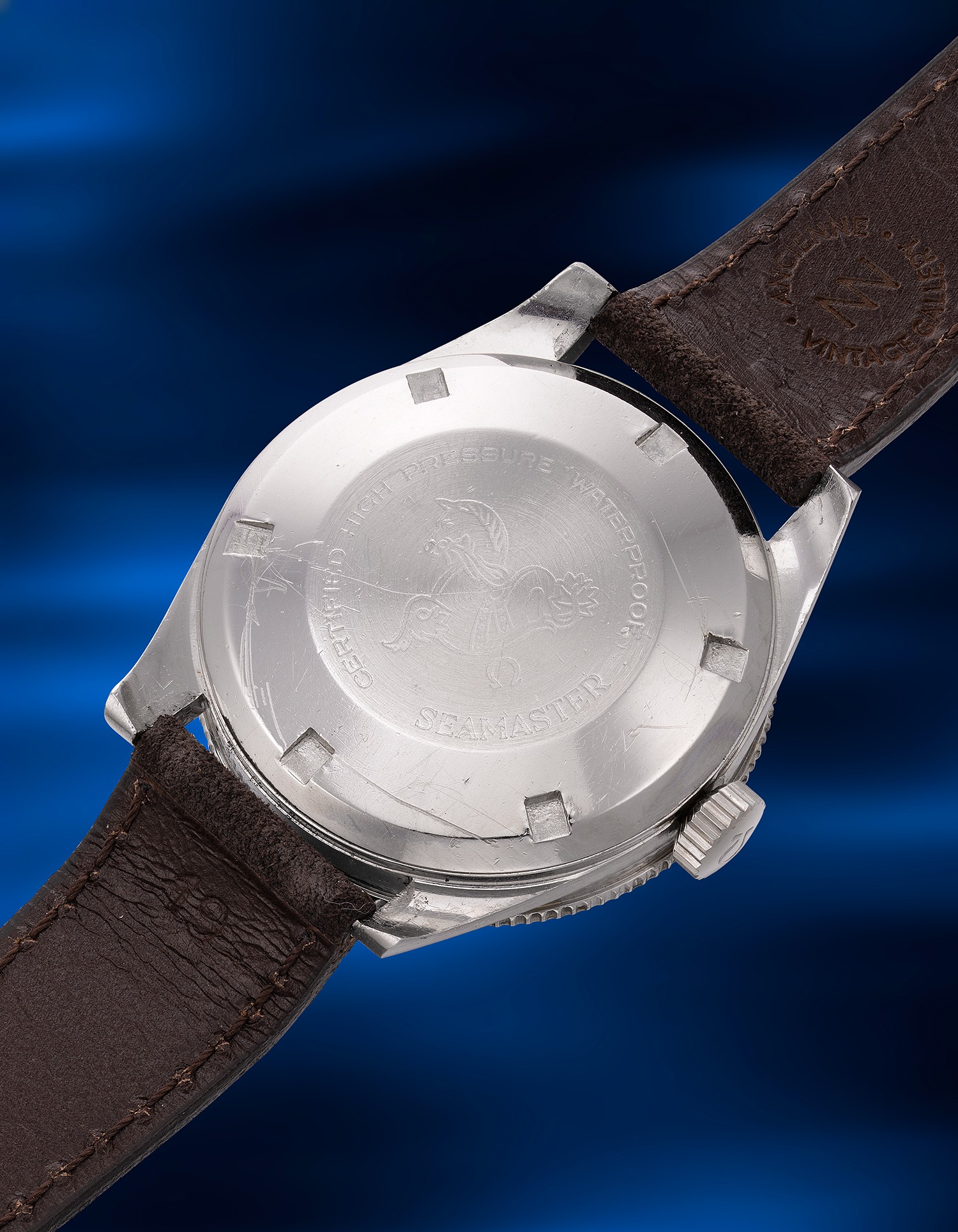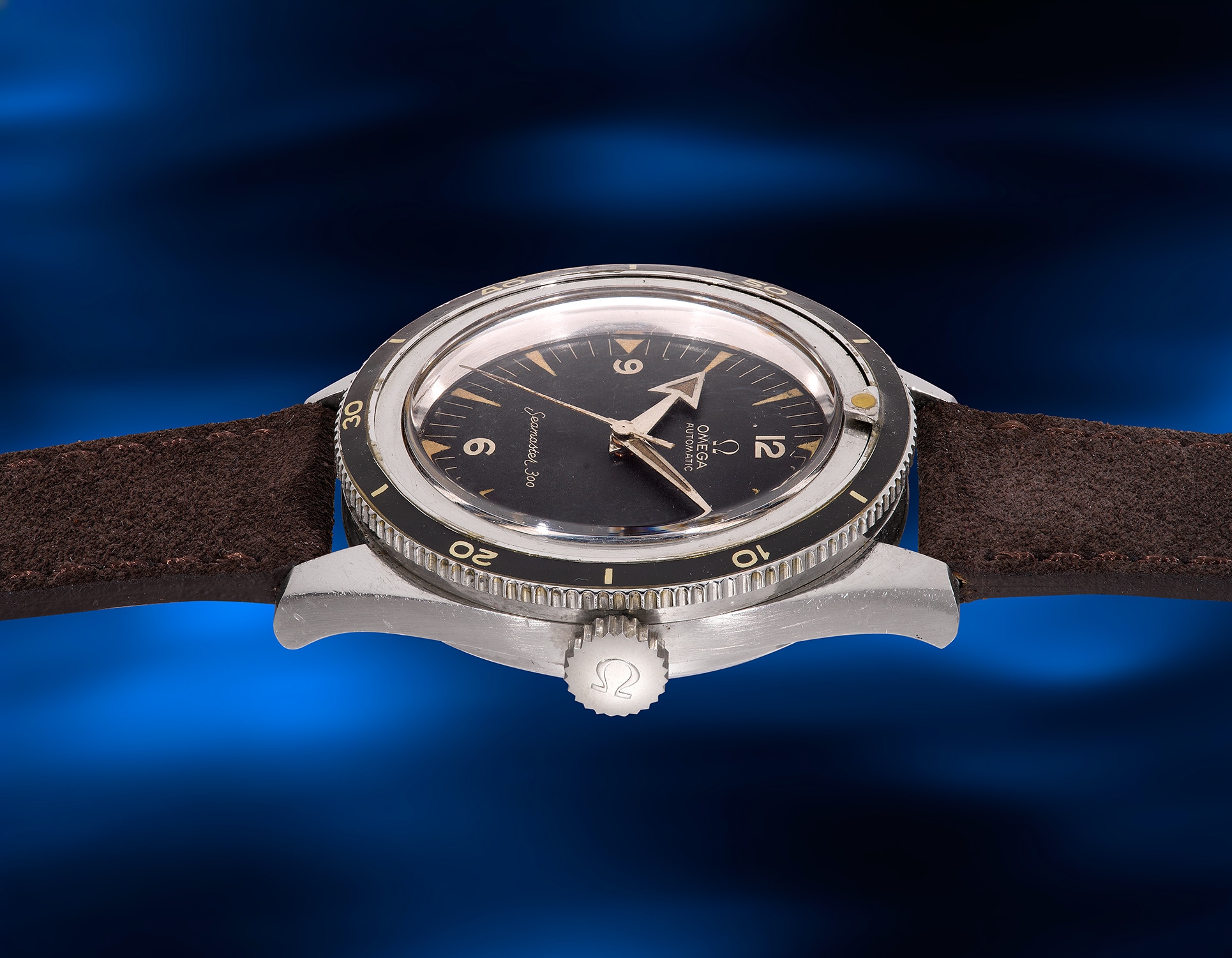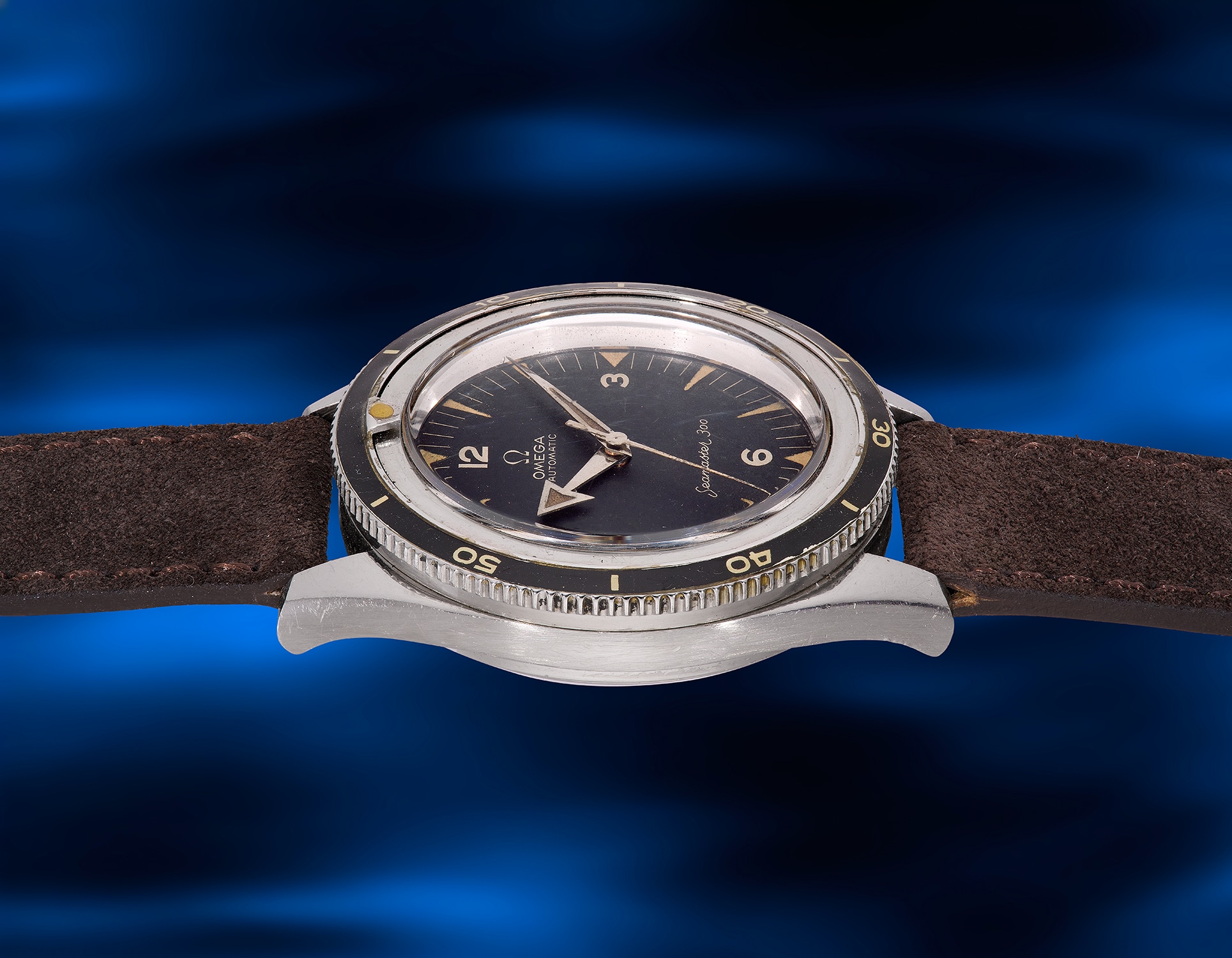









1037
Omega
Ref. CK 2913-4
Seamaster 300
An early, very fine and attractive stainless steel diver’s wristwatch with revolving Bakelite bezel, center seconds and broad-arrow hands
Full-Cataloguing
The present Seamaster 300 reference CK 2913-4 stands out not only for its iconic “Broad Arrow” —often lost to various services over the years—but also for its appealing condition, particularly the dial and original Bakelite bezel. The luminous material has developed an attractive ivory hue, and high radium readings on the Geiger counter indicate that the lumes have been well preserved over the years.
The Seamaster is the Omega model with the longest production run and remains in production today. The reference 2913 is among the most sought-after timepieces in this line due to its status as a precursor to this enduring lineage. Accompanied by an Extract of the Archives confirming that the watch was originally delivered to the United Kingdom, this is a rare opportunity to acquire an original condition Seamaster CK 2913-4.
Omega
Swiss | 1848Omega's rich history begins with its founder, Louis Brandt, who established the firm in 1848 in La Chaux de Fonds. In 1903, the company changed its name to Omega, becoming the only watch brand in history to have been named after one its own movements. A full-fledged manufacturer of highly accurate, affordable and reliable watches, its sterling reputation enabled them to be chosen as the first watch company to time the Olympic Games beginning in 1932. Its continued focus on precision and reliability ultimately led their Speedmaster chronograph wristwatch to be chosen by NASA in 1965 — the first watch worn on the moon.
Key models sought-after by collectors include their first, oversized water-resistant chronograph — the reference 2077, early Speedmaster models such as the CK 2915 and 2998, military-issued versions of the Seamaster and oversized chronometer models such as those fitted with their prestigious caliber 30T2Rg.